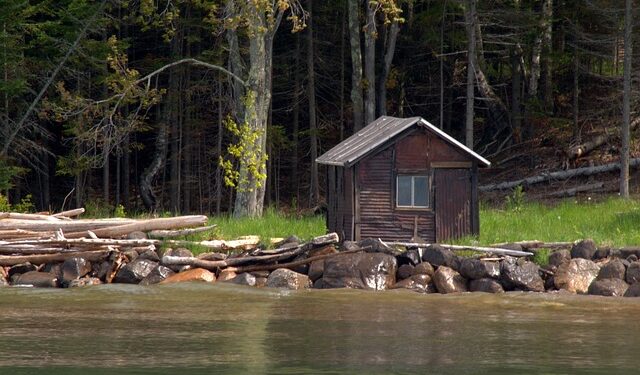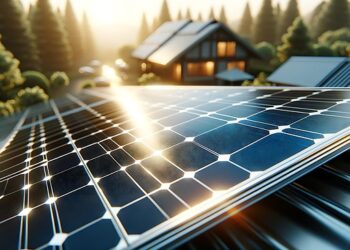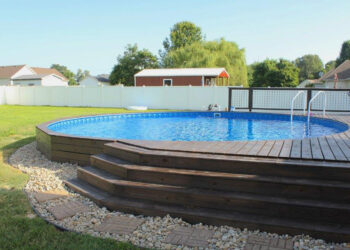The sound of birds chirping instead of an alarm clock. The smell of fresh air rather than car exhaust. The sight of stars blanketing the night sky that was never visible over the city. This is the idyllic vision that compels over 250,000 US households to currently live off-grid, a number that grows exponentially each year. The concept seems like an impossible dream for most people bogged down by work, bills, and the comforts of modern life. But moving beyond the romantic notion, off-grid living is now a practical – and popular – lifestyle option. Thanks to better technology, cheaper renewable systems, and a strong desire for self-sufficiency.
But is off-grid living merely a romantic notion, or can it be a viable lifestyle option? Can the average person thrive when disconnected from the power grid, public water lines, and other public infrastructure? Let’s explore the facts behind off-grid living.
What exactly is off-grid living?
Put simply, off-grid living means functioning without connections to public utilities. An off-grid home operates independently from the electrical power grid, municipal water systems, sewer lines, and sometimes even public roads. These homes harvest their own energy from renewable sources like solar panels and wind turbines. They collect rainwater and rely on composting toilets. Off-grid living statistics show over 3.2 million households in the United States now utilize solar power, a number exploding as panel technology improves and adoption spreads. So, this is a self-sufficient lifestyle that many people now embrace in the United States alone. And those numbers rise each year as renewable technology improves and utility costs soar.
Why Do people choose off-grid living?
While removing utility expenses is a financial incentive to unplug, most off-gridders are driven by deeper motivations. Here are some of the top reasons people take the off-grid leap:
Financial benefits
Eliminating electrical, water, gas and sewer bills saves money over the long term. Building and maintaining alternative systems requires an upfront investment, but over years of use an off-grid home ultimately costs less to operate.
Self-sufficiency
Many off-gridders take pride in their skills and self-reliance. They enjoy producing their own power, growing their own food, and being prepared to handle life apart from a complex consumer supply chain. Tasks become more hands-on but also more rewarding.
Environmental impact
Off-grid living dramatically shrinks a household’s carbon footprint through renewable energy, water conservation, and waste reduction. Even small steps like line-drying clothes instead of running a dryer add up over time. The lifestyle aligns values and actions.
What are the Challenges of off-grid living?
While the simplicity of off-grid life appeals to self-reliant types, the transition also comes with significant hurdles. An off-gridder must be prepared for the following realities:
Setting up the systems
Moving off-grid requires time and money to set up solar panels, batteries, inverters, water filtration, composting toilets, greywater disposal—not to mention a dwelling itself. Doing work yourself saves money but addstime.
Maintenance and repairs
Once established, an off-grid homestead needs regular upkeep and attention—checking systems, repairing weather damage, monitoring supplies. Things can break down quickly without grid backup.
Limited conveniences
Forget microwaves, televisions, computers, or vacuum cleaners sucking up standby power. Daily work becomes more physical, like hauling water, harvesting food, or washing clothes by hand. Some mod cons are possible but limited.
How Can You Live off-grid?
The challenges of off-grid living are significant but not insurmountable. With realistic planning, flexibility, and resilience, it is possible to thrive off the grid long-term:
Start small and simple
Begin with a tiny home or RV to test out off-grid systems on a small scale first. Living in close quarters builds important homesteading skills over time. Expand only as needed.
Have backup power sources
Solar and batteries can meet most needs, but propane generators and gas appliances provide backup during cloudy weather or high-drain times. Redundancy is essential.
Get comfortable with manual tools
Be prepared to complete tasks by hand or with non-electric tools. Hand wash dishes, hang-dry clothes, use hand saws, and so on. Embrace simplicity and minimize dependence.
What are the realities and rewards of living off-grid?
While iconoclastic, off-grid living has moved beyond countercultural niche to practical lifestyle for everyday people seeking freedom and meaning. The path includes hard work but also tangible rewards:
Hard work but freedom
Fetching water daily and troubleshooting breakdowns takes grit. But off-gridders relish life on their own terms. They define needs, not others. Self-determination brings joy.
Less waste and consumerism
Without endless electric outlets or water on demand, excessive consumption halts. An off-gridder uses only what is necessary, mends rather than discards, and stops chasing materialism.
Living in nature
Off-grid places people close to the land, wildlife, seasons and natural rhythms missing from city environments. Peace and appreciation bloom through immersion in the outdoors.
The bottom line
Off-grid living brings difficulties but also the promise of financial savings, skill-building, and alignment with personal values. With eyes open to the challenges, living off the grid can be an achievable dream and profoundly fulfilling path. The efficiency era calls us to reconsider what a home truly requires. Perhaps Thoreau was right when he wrote, “My greatest skill has been to want little.” For some pioneers, off-grid living creates space for what matters most.










